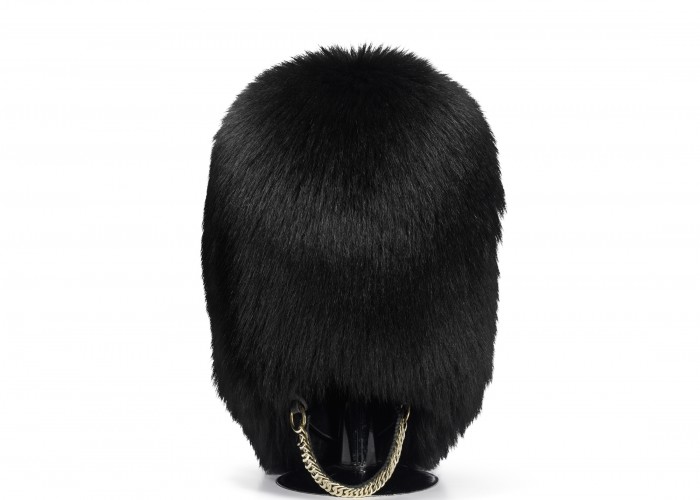Bearskin Headdress

 Bearskin headdress from Wellington Barracks. Copyright Guards Regiment.
Bearskin headdress from Wellington Barracks. Copyright Guards Regiment.
This is the bearskin headdress of an officer of the Grenadier Guards, one of the most famous regiments of infantry in the British Army. This celebrated item, still worn by the Guards Division on ceremonial duties, has its origins in the Battle of Waterloo, where the 1st Foot Guards of Wellington’s army fought against the French Imperial Guard, who wore bearskin caps.
The Imperial Guard were Napoleon’s elite troops, hand-picked for bravery and experience. Founded in 1804, the Guard grew from a personal bodyguard to become an army within the French Army, with its own artillery, cavalry and infantry. The infantry wore bearskin headdresses, as a status symbol and to make themselves look taller and more fearsome in battle.
At Waterloo, the Emperor Napoleon held back his Guard regiments, keeping them in reserve until the very end of the battle. By 7.30pm on 18 June 1815, the situation was desperate for the French. In a final, desperate attempt to win the battle, Napoleon sent the Middle Guard regiments up the hill of Mont St Jean, towards the Allied army.
The British 1st Foot Guards, commanded by a Major-General Maitland, were lying down behind the ridge of Mont St. Jean, away from French cannon-fire. As the Imperial Guard marched over the crest of the ridge, the Duke of Wellington famously shouted, “Now Maitland! Now’s your time!” Over 1,400 British Guards stood up, in a 250-metre-long firing line, and let off a devastating volley of musket fire. Combined with the firing and bayonet charges from other British regiments, this was too much for the Imperial Guard, and they retreated.
To honour their part in this victory, the British 1st Regiment of Foot Guards had their uniforms redesigned to incorporate a bearskin headdress, replacing their peaked cap (“shako”). They were also renamed the “First or Grenadier Regiment of Foot Guards”, as the Prince Regent had been mistakenly told that the Grenadiers were the French regiment they had faced at Waterloo. In fact, the British 1st Foot Guards faced the Chasseurs regiment of French Guards. The white plume on the side of the headdress is a symbol of the Grenadiers.
The tradition of wearing bearskins on ceremonial occasions and for guard duty continues to this day. These headdresses are made with real bearskins. Each hat is 18 inches (46 cm) tall, and weighs 1.5 pounds (.7 kg). This cap is made from the pelt of a Canadian female brown bear (brown bears have thicker fur than black bears, so these pelts are simply dyed black). An entire bear skin is needed for each hat, costing about £650. If carefully maintained, these caps can last for decades.
In battle, the bearskin added height and thus an air of intimidation to the soldier who wore it. Today its use is confined to ceremonial occasions such as Trooping the Colour. For the foreign visitor to this country it is part of the image of the British Army.
-
Education overview
Read the story of a Guardsman from Waterloo, Private John Amison, on the Waterloo 200 Schools E-Book. Malton School have researched the life of this local Waterloo veteran and created a tribute to his service in the Waterloo Campaign, as well as selecting 10 Waterloo objects that represent Private Amison’s life.
If you’re a teacher, student, or parent, you can join the Waterloo 200 Schools programme. To find out how to sign up your class and discover your local Waterloo history, contact [email protected].
-
Curatorial info
- Accession Number: N/A
- Material: Bear skin
- Size: 18 inches height
-
Use this image
You can download and use the high resolution image under a Creative Commons licence, for all non-commercial purposes, provided you attribute the copyright holder.
- Rights Holder: Private collection. Photography Relic Imaging Ltd.
- License Type: Creative Commons
Private Collection
Some objects - such as this one - are owned by private collectors. Waterloo 200 cannot give information on the ownership or location of these items.








